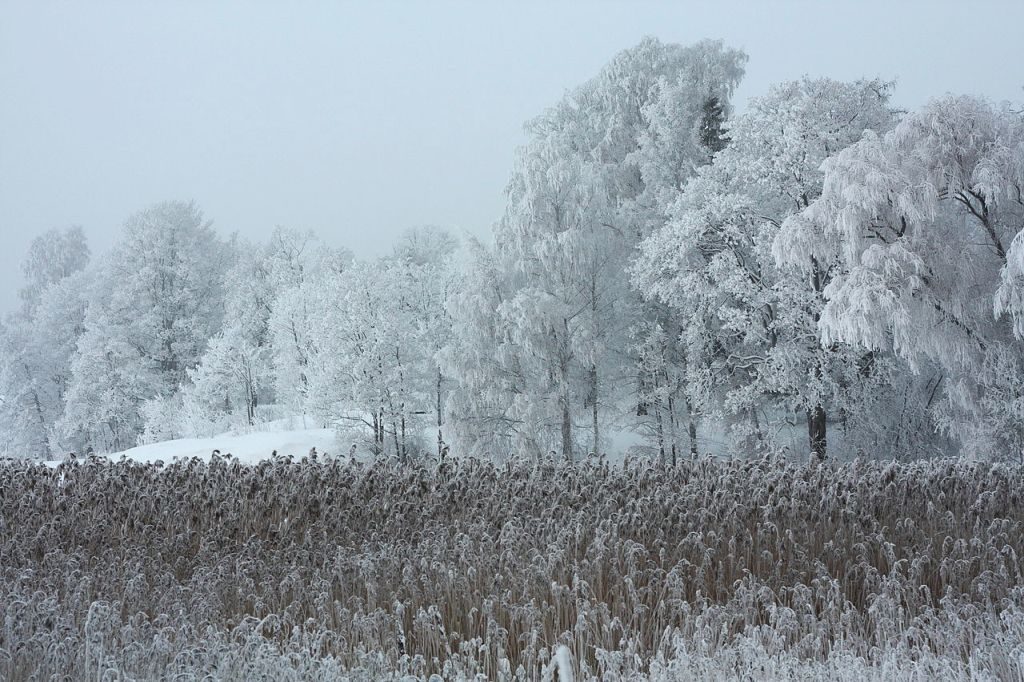
We don’t have flowers in December but we do have ice and it comes in many forms. Here’s the first in a series on ice, starting with my favorite: Rime.
The word “rime” comes from Old English hrim which meant hoarfrost or a chill mist or fog. Nowadays hoarfrost and rime are not the same thing. Hoarfrost doesn’t form in fog. To get rime there has to be cold fog or the location has to be in the clouds. For that reason, “Rime shouts, Mountains!” It’s easy to find rime at high altitudes.
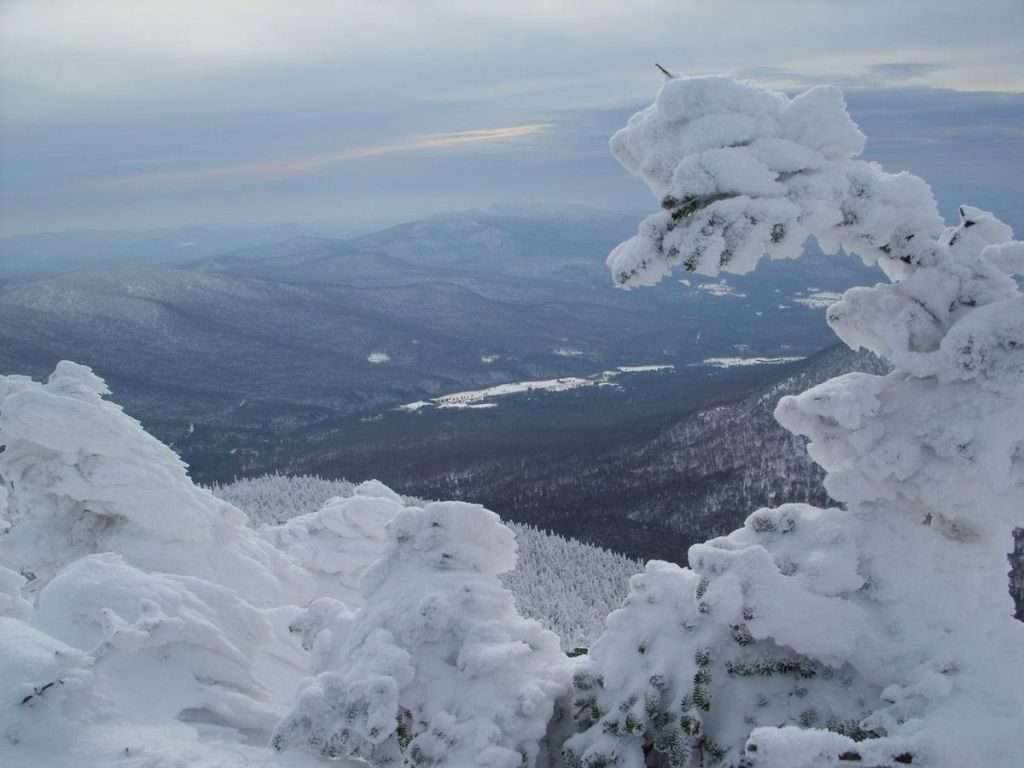
Rime forms when super-cooled water drops (in fog or a cloud) crystallize on cold objects. Soft rime is feathery and so lightweight that it can’t break the trees. Hard rime is denser and comb-like. Both are white because they contain trapped air.
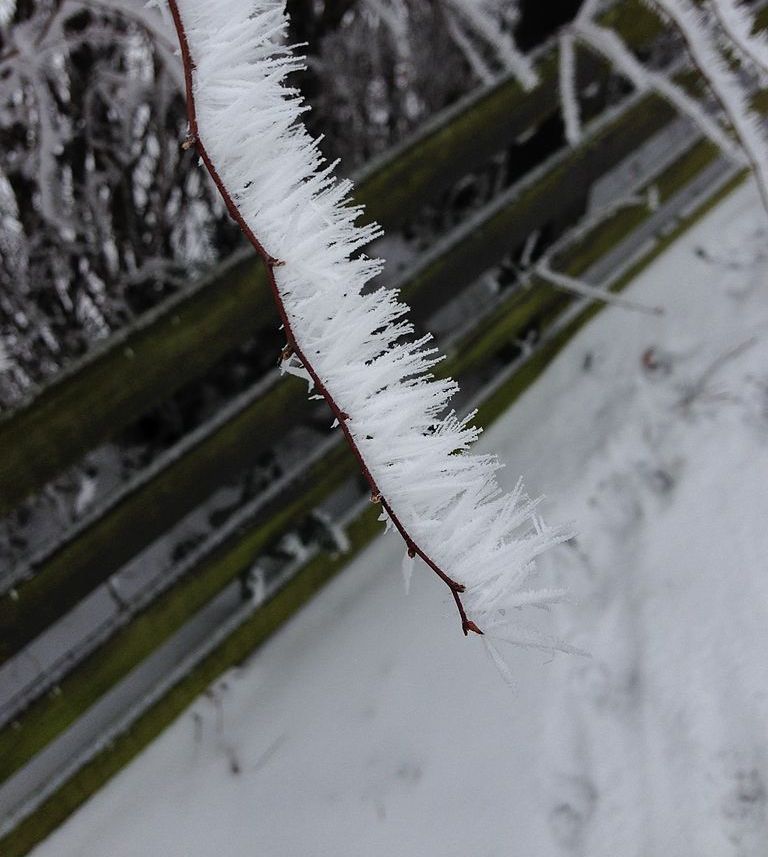
The best part about rime is that it can form in a light wind. When it does it points toward the wind because each new crystal is deposited on the windward side. This is counter-intuitive; it’s the opposite of rain.
What direction did the wind blow through this fence?
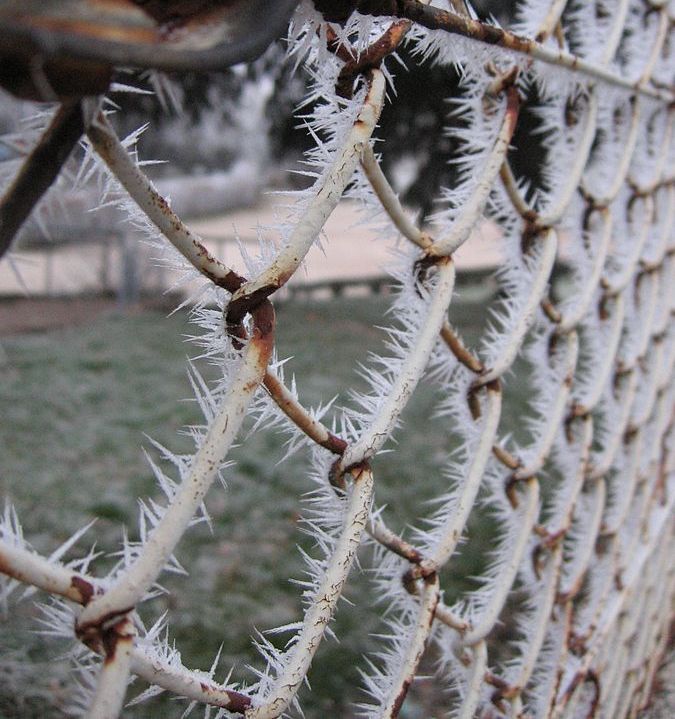
Rime can even coat snowflakes. Graupel, which looks like hail, is actually a rime-coated snowflake. I wonder if these pop when you step on them.
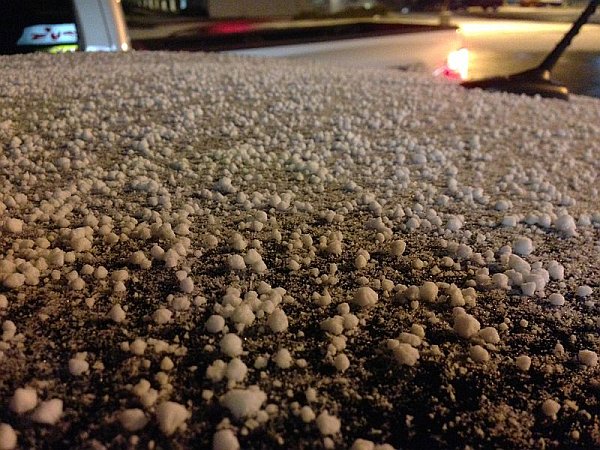
This month is a good time to find rime in the Laurel Highlands. My best experience with it was during an east wind at the Allegheny Front Hawk Watch. No one else was up there to enjoy it. It was way too foggy!
Click here to see more rime photos including a “rime doughnut” at Summitpost.
(photos from Wikimedia Commons; click on the captions to see the originals)
I first learned of graupel from your October 5, 2014 article post https://www.birdsoutsidemywindow.org/2014/10/05/graupeling/
I did not know that soft, feathery rime points toward the direction of the wind. Fascinating! Thanks again for opening our eyes to what’s out there.
Thank you! Very interesting.
I first saw hoar frost a few years ago and was completely in awe! I haven’t seen rime yet (that I know of) but it is truly amazing and beautiful too. Thank you for sharing these lovely photos and information.